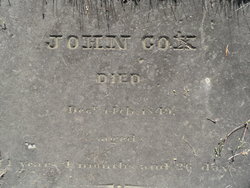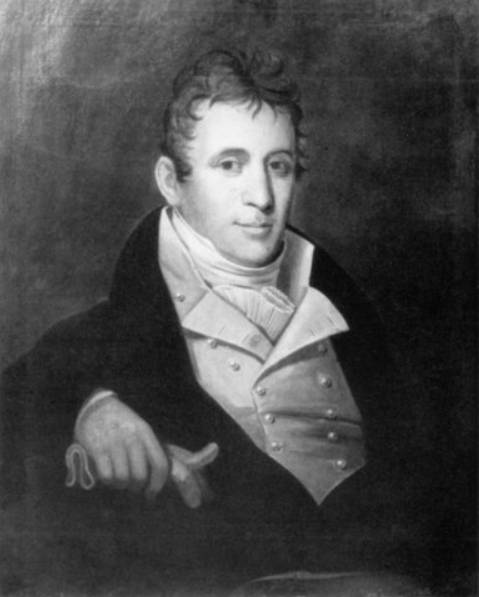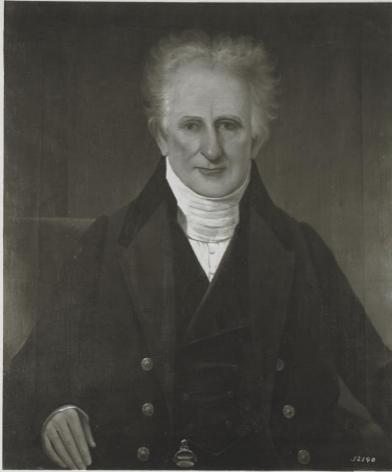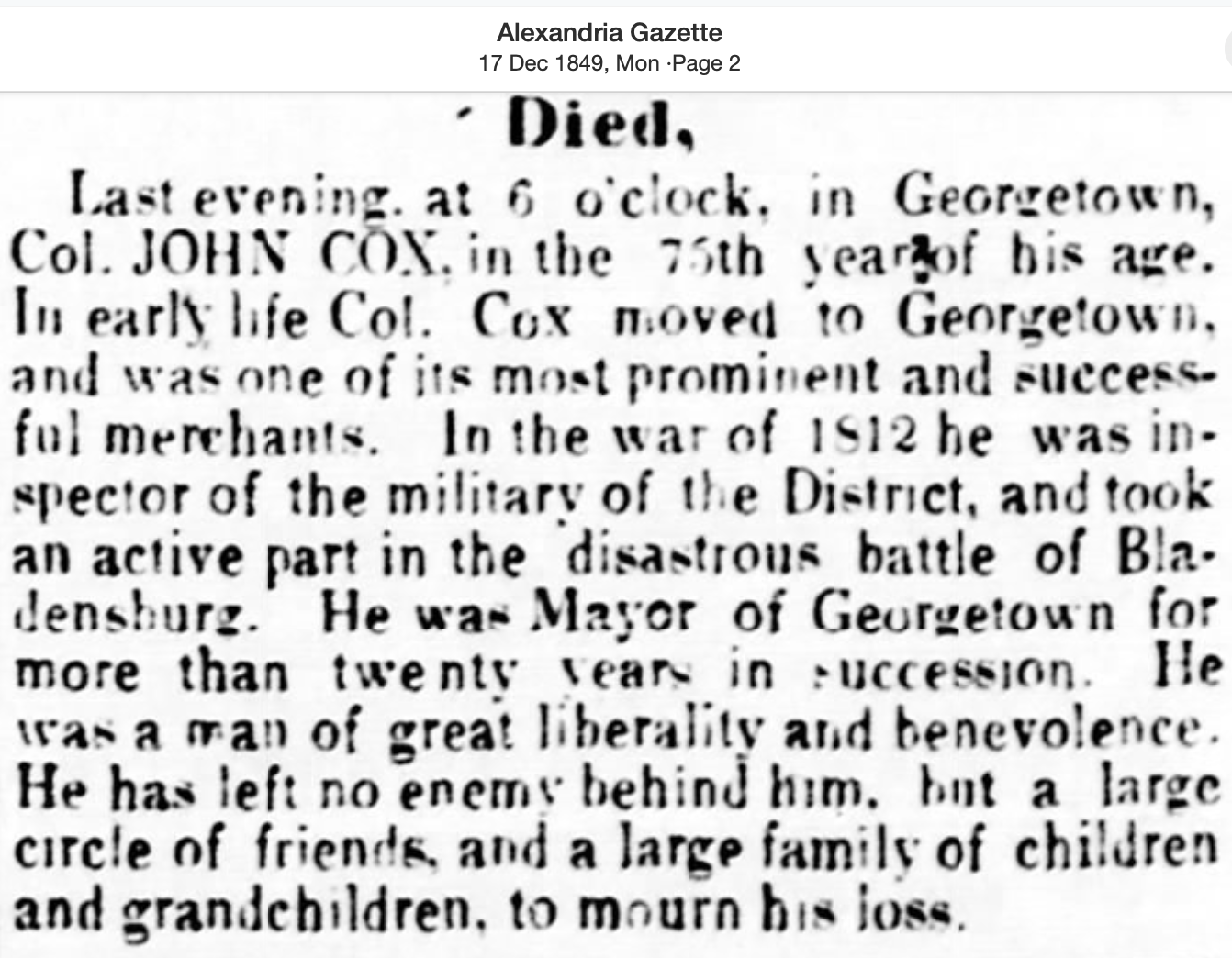Daily National Intelligencer
Saturday, December 15, 1849
Died
Last evening, at 6 o’clock, in Georgetown, Colonel John Cox, in the 75th year of his age. In early life Colonel Cox moved to Georgetown and was one of its most prominent and successful merchants. In the War of 1812 he was inspector of the military of the District and took an active part in the disastrous Battle of Bladensburg. He was Mayor of Georgetown for more than twenty years in succession. He was a man of great liberality and benevolence. He has left no enemy behind him, but a large circle of friends and a large family of children and grandchildren, to mourn his loss. His funeral will take place tomorrow (Sunday) at 3 o’clock, from the late residence of his son, Clement Cox, deceased, at the corner of Gay and Congress Streets and his friends and acquaintances are invited to attend, without further notice.
A Portrait of Old George Town
by Grace Dunlop Ecker
John and Elizabeth Threlkeld had four children, but the only son died in infancy, so the name disappeared and the family is represented only by the descendants of their daughter, Jane, who married John Cox.
Chapter IX
Along First Street (N) from Cox's Row to High Street (Wisconsin Avenue)
On the northeast corner of First Street (N) and Frederick (34th) Street stands the row of houses which John Cox built. Colonel Cox was for many years most prominent in all the affairs of Georgetown, serving as its Mayor longer than any other one man from 1823 to 1845 - 22 years. John Cox was of English descent. He was born in 1775 during the Revolution, was the youngest of four children and being left an orphan as a small child, was raised by an uncle who was a banker in Baltimore. He later lived for a while in Philadelphia and from there came to Georgetown. He first married Matilda Smith, a sister of Clement Smith, well known as the first cashier of the Farmers' & Mechanics Bank, later its president. They had three children, one of whom was named Clement. By his second marriage to Jane Threlkeld he had seven children.
In the War of 1812 he served as a Colonel. He was a large property owner in Georgetown, besides being a well-to-do merchant. He built the row of houses on First (N) Street, called by his name and lived for a while in the house on the corner. That must have been during the period of his first marriage, for after Jane Threlkeld became his wife they built a lovely house on part of the Berleith estate, next door to the old Threlkeld which had been burned and called it The Cedars. It stood where the Western High School now stands and it is difficult to realize now that there, in my memory, was a home surrounded by a mass of trees and vines and was most delightfully private and charming. It was a quaint and lovely old cream colored mansion, a portico on its north front, two long piazzas as usual, along the south side of the house. In later years I myself went there to the private school kept by the Misses Earle, whose father, George Earle purchased the place.
Colonel Cox was celebrated as a dandy. He would saunter down town in silk stockings and pumps, not getting a spot upon himself, while other men would be up to their ankles in mud, for in those days there were no pavements. Stepping-stones were placed at the corners of the streets standing rather high above the roadway to facilitate the pedestrians.
Colonel Cox had moved up to The Cedars when, as mayor in 1824, it fell to his lot to act as host for Georgetown to the Marquis de Lafayette, when he made his famous visit.
A new arrival was imminent in the Cox family, so it was not advisable to have the party, which he wished to give, at his home. Consequently, he used one of these houses which was vacant at that time, number 3337; had it furnished from top to bottom, his eldest daughter, Sally, acting in her mother's place as hostess for the distinguished party invited to meet the hero of the hour.
It is said that one young lady in her enthusiasm fell upon her knees before the Marquis and impressed a kiss upon his hands. There was a fashion in those days of decorating the floor by painting a pattern around the edges with colored chalks - garlands of roses entwined with the flags of the two countries. A marvelous supper was served; it is said it included 600 reed birds. It is to be hoped it also included other things more substantial than this high sounding but sparsely covered game.
The coach of Colonel Cox was at the disposal of the honored guest during the period of his stay. When he made his formal entry into the District of Columbia, having come by way of Baltimore, he was escorted by a troop of cavalry from Montgomery County commanded by my grandfather, Captain Henry Dunlop, a Georgetonian, then farming the family plantation, Hayes, seven miles north of town.
Tradition says that number 3337 had a tunnel leading to the river. Some such large opening was discovered when the owner excavated recently to make a pool in the garden.
Daily National Intelligencer
Saturday, December 15, 1849
Died
Last evening, at 6 o’clock, in Georgetown, Colonel John Cox, in the 75th year of his age. In early life Colonel Cox moved to Georgetown and was one of its most prominent and successful merchants. In the War of 1812 he was inspector of the military of the District and took an active part in the disastrous Battle of Bladensburg. He was Mayor of Georgetown for more than twenty years in succession. He was a man of great liberality and benevolence. He has left no enemy behind him, but a large circle of friends and a large family of children and grandchildren, to mourn his loss. His funeral will take place tomorrow (Sunday) at 3 o’clock, from the late residence of his son, Clement Cox, deceased, at the corner of Gay and Congress Streets and his friends and acquaintances are invited to attend, without further notice.
A Portrait of Old George Town
by Grace Dunlop Ecker
John and Elizabeth Threlkeld had four children, but the only son died in infancy, so the name disappeared and the family is represented only by the descendants of their daughter, Jane, who married John Cox.
Chapter IX
Along First Street (N) from Cox's Row to High Street (Wisconsin Avenue)
On the northeast corner of First Street (N) and Frederick (34th) Street stands the row of houses which John Cox built. Colonel Cox was for many years most prominent in all the affairs of Georgetown, serving as its Mayor longer than any other one man from 1823 to 1845 - 22 years. John Cox was of English descent. He was born in 1775 during the Revolution, was the youngest of four children and being left an orphan as a small child, was raised by an uncle who was a banker in Baltimore. He later lived for a while in Philadelphia and from there came to Georgetown. He first married Matilda Smith, a sister of Clement Smith, well known as the first cashier of the Farmers' & Mechanics Bank, later its president. They had three children, one of whom was named Clement. By his second marriage to Jane Threlkeld he had seven children.
In the War of 1812 he served as a Colonel. He was a large property owner in Georgetown, besides being a well-to-do merchant. He built the row of houses on First (N) Street, called by his name and lived for a while in the house on the corner. That must have been during the period of his first marriage, for after Jane Threlkeld became his wife they built a lovely house on part of the Berleith estate, next door to the old Threlkeld which had been burned and called it The Cedars. It stood where the Western High School now stands and it is difficult to realize now that there, in my memory, was a home surrounded by a mass of trees and vines and was most delightfully private and charming. It was a quaint and lovely old cream colored mansion, a portico on its north front, two long piazzas as usual, along the south side of the house. In later years I myself went there to the private school kept by the Misses Earle, whose father, George Earle purchased the place.
Colonel Cox was celebrated as a dandy. He would saunter down town in silk stockings and pumps, not getting a spot upon himself, while other men would be up to their ankles in mud, for in those days there were no pavements. Stepping-stones were placed at the corners of the streets standing rather high above the roadway to facilitate the pedestrians.
Colonel Cox had moved up to The Cedars when, as mayor in 1824, it fell to his lot to act as host for Georgetown to the Marquis de Lafayette, when he made his famous visit.
A new arrival was imminent in the Cox family, so it was not advisable to have the party, which he wished to give, at his home. Consequently, he used one of these houses which was vacant at that time, number 3337; had it furnished from top to bottom, his eldest daughter, Sally, acting in her mother's place as hostess for the distinguished party invited to meet the hero of the hour.
It is said that one young lady in her enthusiasm fell upon her knees before the Marquis and impressed a kiss upon his hands. There was a fashion in those days of decorating the floor by painting a pattern around the edges with colored chalks - garlands of roses entwined with the flags of the two countries. A marvelous supper was served; it is said it included 600 reed birds. It is to be hoped it also included other things more substantial than this high sounding but sparsely covered game.
The coach of Colonel Cox was at the disposal of the honored guest during the period of his stay. When he made his formal entry into the District of Columbia, having come by way of Baltimore, he was escorted by a troop of cavalry from Montgomery County commanded by my grandfather, Captain Henry Dunlop, a Georgetonian, then farming the family plantation, Hayes, seven miles north of town.
Tradition says that number 3337 had a tunnel leading to the river. Some such large opening was discovered when the owner excavated recently to make a pool in the garden.
Family Members
Advertisement
Explore more
Sponsored by Ancestry
Advertisement














